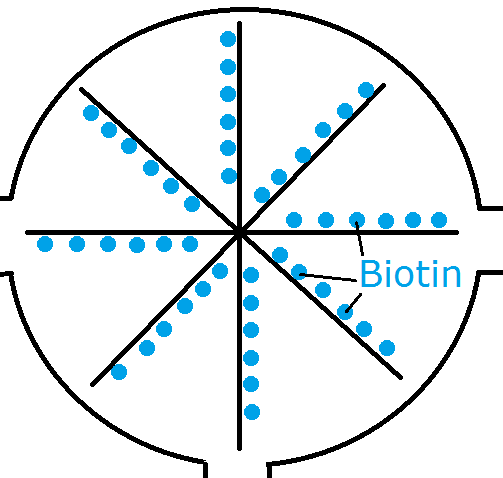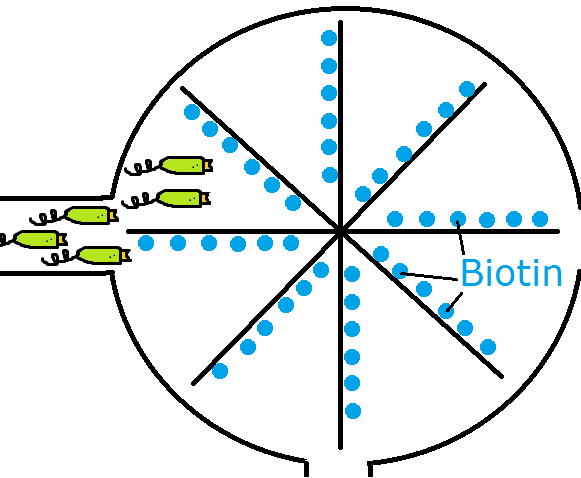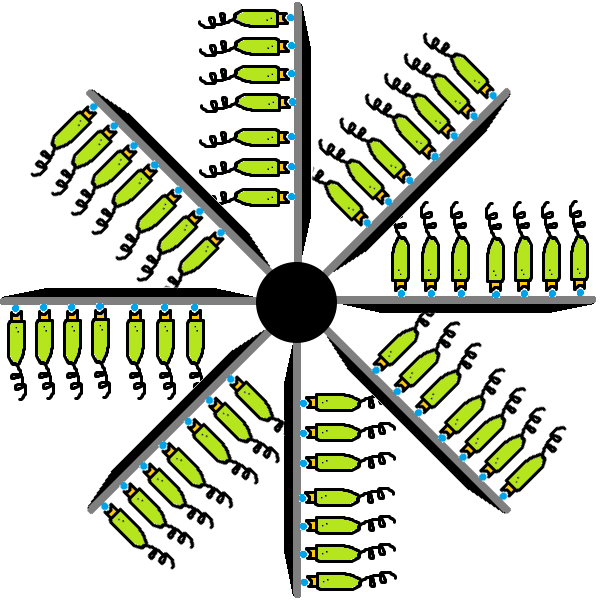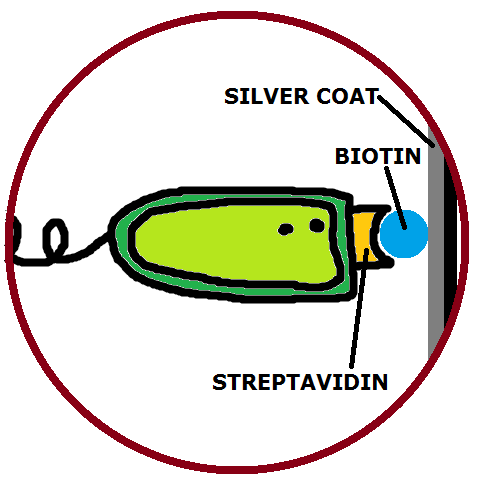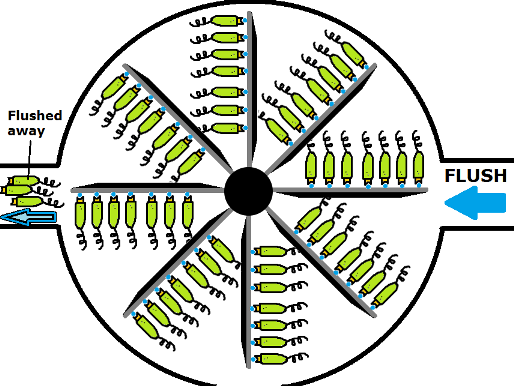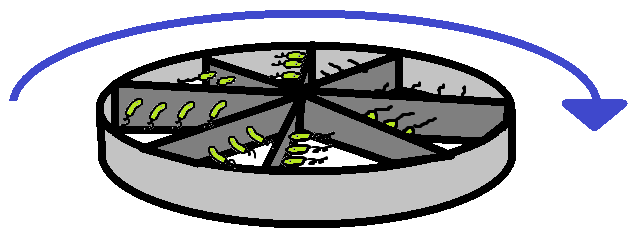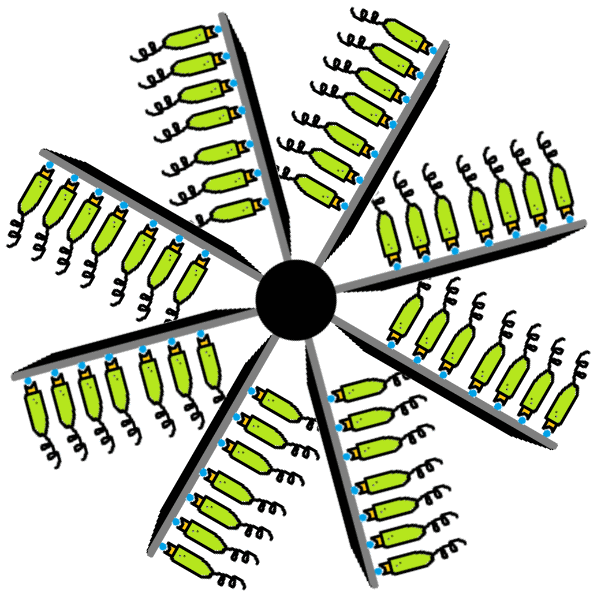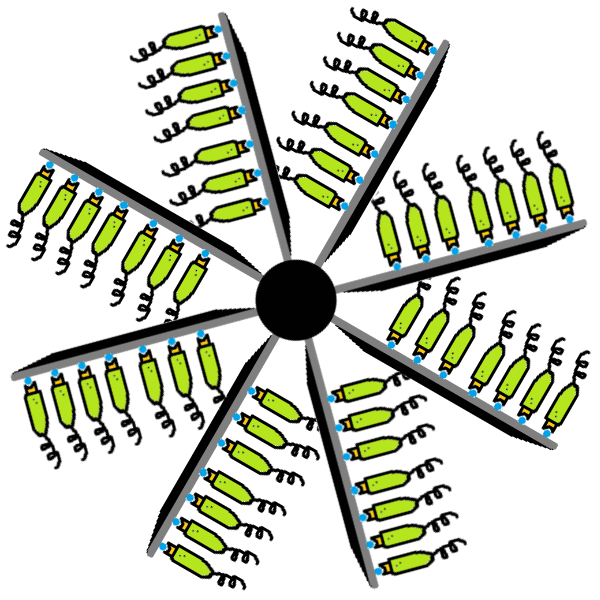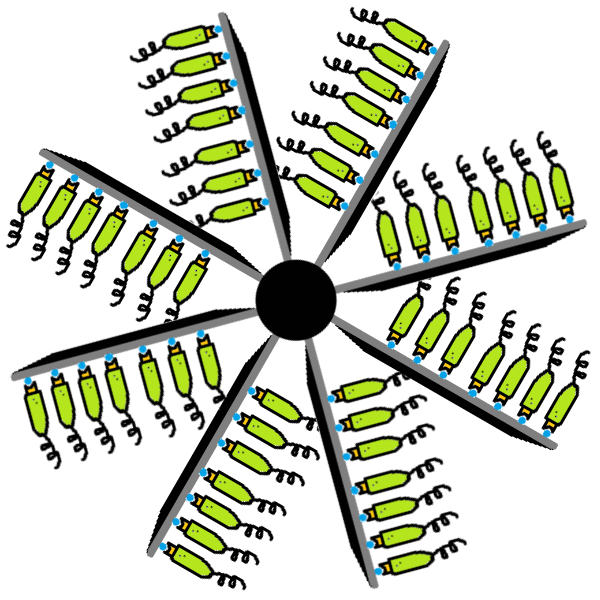Team:HKU-HKBU/Assembly
From 2009.igem.org
(→Step 5. BactoMotor in Action) |
YinanZhang (Talk | contribs) |
||
| (10 intermediate revisions not shown) | |||
| Line 7: | Line 7: | ||
==Introduction== | ==Introduction== | ||
| - | Our BactoMotor | + | Our BactoMotor comprises of three devices –[[Team:HKU-HKBU/Motor_Overview|Micro-Motor]], [[Team:HKU-HKBU/Polar_Expression_Design|Direction Controller]] and [[Team:HKU-HKBU/Speed_Control_Design |Speed Controller]]. |
| - | As their names indicate, the [[Team:HKU-HKBU/Motor_Overview|Micro-Motor]]is the core part of the BactoMotor, and it is small (micrometer scale). The [[Team:HKU-HKBU/Polar_Expression_Design| | + | As their names indicate, the [[Team:HKU-HKBU/Motor_Overview|Micro-Motor]] is the core part of the BactoMotor, and it is small (micrometer scale). The [[Team:HKU-HKBU/Polar_Expression_Design|Direction Controller]] ensures that the propelling force generated by the bacteria translates into a coordinated and directional rotation of the motor. The [[Team:HKU-HKBU/Speed_Control_Design |Speed Controller]] is used to control the speed of the Bacto-motor |
| - | Each device is designed, engineered and tested | + | Each device is designed, engineered and tested separately, and functional on its own. After testing and fine-tuning, the devices are '''assembled''' to form the final System BactoMotor. The end-results is a micrometer-scale BactoMotor with unidirectional rotation, its speed controllable. |
==Prodecures== | ==Prodecures== | ||
==='''Step 1. Installation of Micro-Motor'''=== | ==='''Step 1. Installation of Micro-Motor'''=== | ||
| - | The Micro-Motor will be installed into a microchip container (Fig.1a, 1b) with separated chambers. Only one side of the arms of the motor is coated with Biotin ([[Team:HKU-HKBU/Polar_Expression_Design|see the Directional Controller]]).[[Image:HKU-HKBU_ass_f1a_s2.png|frame|center| | + | The Micro-Motor will be installed into a microchip container (Fig.1a, 1b) with separated chambers. Only one side of the arms of the motor is coated with Biotin ([[Team:HKU-HKBU/Polar_Expression_Design|see the Directional Controller]]).[[Image:HKU-HKBU_ass_f1a_s2.png|frame|center|400px|'''Figure 1a:''' Photos of the microchips for micro-motor installation; '''A:''' A photo showing the chambers and the valve systems; '''B:''' Valve 3 closed; '''C:''' Valves 4, 5, 6 and 7 are closed while water is injected into the channel; '''D:''' Valve 1 and 7 closed, enclosing the crystal violet solution in the lower 4 chambers; '''E:''' The photo of the chamber system]][[Image:HKU-HKBU ass f1b.PNG|thumb|200px|center|'''Figure 1b:''' A diagram showing the Micro-Motor Module installed into a chamber inside the microchip.]] |
==='''Step 2. Introduction of Bacteria'''=== | ==='''Step 2. Introduction of Bacteria'''=== | ||
| - | The Bacteria with both Directional Controller and Speed Controller Modules implemented will be introduced to the Micro-Motor ( | + | The Bacteria with both Directional Controller and Speed Controller Modules implemented will be introduced to the Micro-Motor (Figure 2). [[Image:HKU-HKBU ass f2.PNG|thumb|200px|center|'''Figure 2:''' Introduction of Bacteria into the Micro-Motor]] |
==='''Step 3. Action of Directional Controller'''=== | ==='''Step 3. Action of Directional Controller'''=== | ||
| - | Under the effect of the | + | Under the effect of the Direction Controller, all bacteria will only bind onto the sides coated with biotin on each blade of the Micro-Motor.(Fig.3a, 3b)[[Image:HKU-HKBU ass f3a.PNG|thumb|200px|center|'''Fig.3a:''' The bacteria bounded to the Micro-Motor through action of the Direction Controller Module (Plan View)]][[Image:HKU-HKBU ass f3b.PNG|thumb|200px|center|'''Fig.3b:''' A microscopic view of the Direction Controller Module at work.]] |
==='''Step 4. Removing Excessive Bacteria'''=== | ==='''Step 4. Removing Excessive Bacteria'''=== | ||
| Line 28: | Line 28: | ||
==='''Step 5. BactoMotor in Action'''=== | ==='''Step 5. BactoMotor in Action'''=== | ||
| - | As the Bacteria swims, they will push the motor into rotation. (clockwise as demonstrated in Fig. 5a, 5b)[[Image:HKU-HKBU ass f4a.PNG|thumb| | + | As the Bacteria swims, they will push the motor into rotation. (clockwise as demonstrated in Fig. 5a, 5b)[[Image:HKU-HKBU ass f4a.PNG|thumb|300px|center|'''Fig.5a:''' The Directional Rotation of the Micro-Motor achieved by the Directional Controller Module]][[Image:HKU-HKBU ass f4b.gif|thumb|200px|center|'''Fig.5b:''' An animation showing the BactoMotor in action.]] |
==='''Step 6. Using the Speed Controller'''=== | ==='''Step 6. Using the Speed Controller'''=== | ||
| - | To utilize the Speed Controller Module, | + | To utilize the Speed Controller Module, inducer aTc is added to the Microchip containing the Micro-Motor. Increase in concentration of the inducer aTc will lead to an overall increase in rotational speed of the Bacto-Motor. (Fig. 6a, 6b)[[Image:HKU-HKBU ass f5a.gif|thumb|200px|center|'''Fig.6a:''' On additional of 0.5 effective dose of inducer aTc]][[Image:HKU-HKBU ass f5b.gif|thumb|200px|center|'''Fig.6b:''' On additional of 1.0 effective dose of inducer]] |
| + | |||
| + | On the other hand, dilution/chelation of the inducer will decrease the speed of the motor. | ||
{{Team:HKU-HKBU/footer}} | {{Team:HKU-HKBU/footer}} | ||
Latest revision as of 02:57, 22 October 2009
Contents |
Assembly of BactoMotor
Introduction
Our BactoMotor comprises of three devices –Micro-Motor, Direction Controller and Speed Controller.
As their names indicate, the Micro-Motor is the core part of the BactoMotor, and it is small (micrometer scale). The Direction Controller ensures that the propelling force generated by the bacteria translates into a coordinated and directional rotation of the motor. The Speed Controller is used to control the speed of the Bacto-motor
Each device is designed, engineered and tested separately, and functional on its own. After testing and fine-tuning, the devices are assembled to form the final System BactoMotor. The end-results is a micrometer-scale BactoMotor with unidirectional rotation, its speed controllable.
Prodecures
Step 1. Installation of Micro-Motor
The Micro-Motor will be installed into a microchip container (Fig.1a, 1b) with separated chambers. Only one side of the arms of the motor is coated with Biotin (see the Directional Controller).
Step 2. Introduction of Bacteria
The Bacteria with both Directional Controller and Speed Controller Modules implemented will be introduced to the Micro-Motor (Figure 2).Step 3. Action of Directional Controller
Under the effect of the Direction Controller, all bacteria will only bind onto the sides coated with biotin on each blade of the Micro-Motor.(Fig.3a, 3b)Step 4. Removing Excessive Bacteria
The extra bacterial cells will be removed by medium flush. (Fig. 4)Step 5. BactoMotor in Action
As the Bacteria swims, they will push the motor into rotation. (clockwise as demonstrated in Fig. 5a, 5b)Step 6. Using the Speed Controller
To utilize the Speed Controller Module, inducer aTc is added to the Microchip containing the Micro-Motor. Increase in concentration of the inducer aTc will lead to an overall increase in rotational speed of the Bacto-Motor. (Fig. 6a, 6b)
On the other hand, dilution/chelation of the inducer will decrease the speed of the motor.
 "
"

